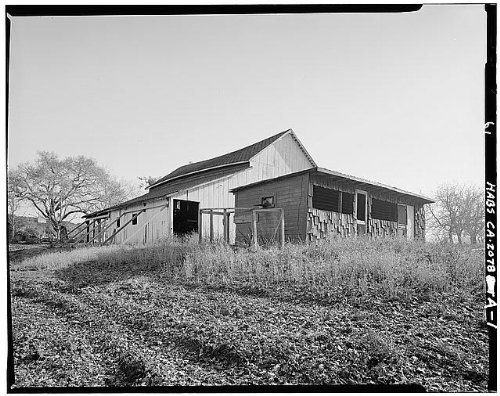Monday, July 31, 2017
The Dog Days of Summer
by Michael Hofferber. Copyright © 1997. All rights reserved.
These are the dog days of summer, a time of year when creeks run dry, the air stands still and the sun beats down relentlessly, day after day, or so it seems.
These are the days when we rediscover shade, pools, and the contents of our freezers. Cooling off becomes an obsession.
Over-heated hounds do lounge beneath porches and trees on hot afternoons, but it is not for them that "dog days" were named. Instead, this parching period pertains to Sirius, the "Dog Star," which rises and sets with the sun from mid-July until September. Sirius is also called "The Scorching One." Its lurid presence on the horizon evokes desperate memories of withered crops, raging wildfires and infernal droughts.
Continued at... The Dog Days of Summer
Out There
The Nature Pages
Artwork: Dog Days of Summer Garden Flag
Friday, July 21, 2017
The Northern Spy and Other Edible Antiques
by Michael Hofferber. Copyright © 1997. All rights reserved.
A Rhode Island Greening is about as common in the contemporary American kitchen as a butter churn. It's as likely to be used as a woodburning cookstove or an icebox. Few of them have ever been microwaved.
The Northern Spy, once a standby at neighborhood grocers, is rarely seen in today's supermarkets. It's gone the way of the horse-drawn carriage and the stagecoach. Just try to find one.
The Greening and the Spy are both apples, two of the finest-tasting varieties ever to touch the American palate. But today they are "antiques," each more than a century old.
Continued at... The Northern Spy and Other Edible Antiques
Rural Delivery
Out of the Past
Apples
Artwork: Northern Spy
A Rhode Island Greening is about as common in the contemporary American kitchen as a butter churn. It's as likely to be used as a woodburning cookstove or an icebox. Few of them have ever been microwaved.
The Northern Spy, once a standby at neighborhood grocers, is rarely seen in today's supermarkets. It's gone the way of the horse-drawn carriage and the stagecoach. Just try to find one.
The Greening and the Spy are both apples, two of the finest-tasting varieties ever to touch the American palate. But today they are "antiques," each more than a century old.
Continued at... The Northern Spy and Other Edible Antiques
Rural Delivery
Out of the Past
Apples
Artwork: Northern Spy
Wednesday, July 12, 2017
Where Oliver Found His Place
by Michael Hofferber. Copyright © 2006. All rights reserved.
This is the 1960s, and a wife's place is at her husband's side, as Oliver testifies:
You are my wife!"
Lisa had forgotten about the Hungarian Parliament's "Big Dumb Law of 1924," which stated: "All Hungarian women have to do whatever their husbands want them to do, no matter how dumb it is."
Goodbye city life.
And so the Haney Place becomes the Douglas Farm -- with all its clutter, fallow fields, and telephones mounted atop telephone poles -- for six television seasons. Oliver struggles gamely to make his farm a success while Lisa brings some graciousness and finer things of life to their rural experience. They stand side by side, in a parody of American Gothic, and declare:
Green Acres, we are there!
Continued at... Where Oliver Found His Place
See the Movie, Read the Book
Farm Supply
Artwork: Green Acres Poster
Monday, July 10, 2017
Flown The Coop
by Michael Hofferber. Copyright © 2005. All rights reserved.
Nowadays, I'm hard-pressed to find a chicken coop. We have no chickens. None of our neighbors keep chickens. There are chickens around and eggs for sale someplace nearby, I'm sure, but I couldn't give directions.
We've talked about raising chickens. Every spring, as the slugs rise to gnaw on the strawberries, my wife says, "We ought to have chickens." Free-ranging hens are an effective deterrent to slugs, grasshoppers and many other insect pests. They'll also keep down the weeds and add nutrients to your soil if you manage them carefully.
Every time I trim the fat off a fleshy store-bought chicken I'm preparing for the grill, I tell myself, "We ought to raise our own chickens."
Chickens convert feed to meat efficiently. Most broilers will gain a pound of weight for every two-and-a-half pounds of feed. If a bird is allowed to free-range, not only will it be less fatty, but nearly half of its feed will come from foraging grubs, weeds and worms.
Continued at... Flown The Coop
Rural Delivery
Out of the Past
Husbandry
Artwork: Chicken Coop at Eugene O'Neill House in Contra Costa County, California
Nowadays, I'm hard-pressed to find a chicken coop. We have no chickens. None of our neighbors keep chickens. There are chickens around and eggs for sale someplace nearby, I'm sure, but I couldn't give directions.
We've talked about raising chickens. Every spring, as the slugs rise to gnaw on the strawberries, my wife says, "We ought to have chickens." Free-ranging hens are an effective deterrent to slugs, grasshoppers and many other insect pests. They'll also keep down the weeds and add nutrients to your soil if you manage them carefully.
Every time I trim the fat off a fleshy store-bought chicken I'm preparing for the grill, I tell myself, "We ought to raise our own chickens."
Chickens convert feed to meat efficiently. Most broilers will gain a pound of weight for every two-and-a-half pounds of feed. If a bird is allowed to free-range, not only will it be less fatty, but nearly half of its feed will come from foraging grubs, weeds and worms.
Continued at... Flown The Coop
Rural Delivery
Out of the Past
Husbandry
Artwork: Chicken Coop at Eugene O'Neill House in Contra Costa County, California
Thursday, July 6, 2017
Folks
by Michael Hofferber. Copyright © 1997. All rights reserved.
Grayce grew up on horses. By the age of seven she was riding alone. At 18, she drove stage teams for her uncle up to mines in the Ochoco Mountains. She'd ride up from Prineville, stay overnight at the stage station, and return the next day. One day up, one day back, day after day. It was great work.
"My mother wanted me to be a lady. That was always a bad word with me. I just wanted to be me," Grayce explained.
For a time, she lived with her mother in Portland, working at a dimestore. But soon as she could arrange it, Grayce was back in Prineville. There were two problems with city life. First, there were no horses. ("Horses were my first love.") Second, she didn't like the people.
"I don't like people," she said. "I like folks."
"What's the difference?" I asked.
Continued at... Folks
Out of the Past
The Corral
Artwork: Oregon Summer Cowgirl by Paul A. Lanquist
Wednesday, July 5, 2017
Full Bloom
by Michael Hofferber. Copyright © 1996. All rights reserved.
Have you ever wondered why the tulip drops its petals just as orchids are unfolding and while pansies and petunias go on blooming? Is it the heat of summer that makes them fade? Or some aversion to longer days?
Blame it on plant genetics. Flowers don't die off; they are deliberately strangled by the rest of the plant.
A tulip's bloom, however beautiful, serves one purpose to the plant: pollination. A lingering flower saps the energy a plant needs for bulb and seed development. Once pollinated, its beauty is a useless distraction from unpollinated flowers, and so it dies like Desdemona at the hands of Othello, its life tragically cut short.
Continued at... Full Bloom
Rural Delivery
Out There
Growth Spurts
Artwork: Tulip
Have you ever wondered why the tulip drops its petals just as orchids are unfolding and while pansies and petunias go on blooming? Is it the heat of summer that makes them fade? Or some aversion to longer days?
Blame it on plant genetics. Flowers don't die off; they are deliberately strangled by the rest of the plant.
A tulip's bloom, however beautiful, serves one purpose to the plant: pollination. A lingering flower saps the energy a plant needs for bulb and seed development. Once pollinated, its beauty is a useless distraction from unpollinated flowers, and so it dies like Desdemona at the hands of Othello, its life tragically cut short.
Continued at... Full Bloom
Rural Delivery
Out There
Growth Spurts
Artwork: Tulip
Subscribe to:
Posts (Atom)





